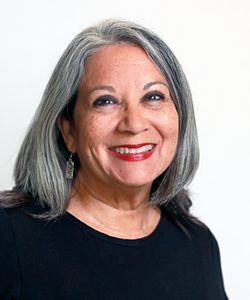
13 Aug A history of the code of ethics for judiciary interpreters
Let me begin with a disclaimer: documentation about the early codes of ethics for judiciary interpreters, also called codes of professional responsibility, is scant or lost altogether. I am writing mostly from memory and some documents I have been able to track down, which means that what you are about to read is “a history,” not “the history.” The earliest version of a Code of Ethical Practices I have found is the one published by the Court Interpreters and Translators Association (CITA) in 1981. It was probably written sometime between the creation of the association in 1978 and a publication called “Yearbook 1981.” CITA’s was a code with fundamental principles: to interpret and to translate with the greatest fidelity and accuracy, to maintain professional discretion, to accept no assignment for which one is unqualified, to share professional knowledge, to refrain from any action likely to discredit the profession, and to be loyal to colleagues and the profession. The Code was a reflection of the state of the profession at that time.
 The next version I found was drafted sometime before 1990 by the Court Interpreters Advisory Group (CIAG), intended to be part of the Guide to Judiciary Policy. CIAG was a small group of staff interpreters that the Administrative Office of the U.S. Courts had in the early days of the federal certification program. That Code of Professional Responsibility also listed very fundamental principles in 14 canons, including court decorum, confidentiality, and impartiality. A few of the canons, however, are different from the CITA Code and address considerations such as working unobtrusively, not accepting remuneration, and refraining from giving advice or expressing personal opinions. This one also reflects the profession’s state at that particular moment in time, but the Codes are also enlightening about their target audiences. CITA’s was aimed at judiciary interpreters and translators in the field, whereas CIAG’s was aimed at interpreters working in the federal courts.
The next version I found was drafted sometime before 1990 by the Court Interpreters Advisory Group (CIAG), intended to be part of the Guide to Judiciary Policy. CIAG was a small group of staff interpreters that the Administrative Office of the U.S. Courts had in the early days of the federal certification program. That Code of Professional Responsibility also listed very fundamental principles in 14 canons, including court decorum, confidentiality, and impartiality. A few of the canons, however, are different from the CITA Code and address considerations such as working unobtrusively, not accepting remuneration, and refraining from giving advice or expressing personal opinions. This one also reflects the profession’s state at that particular moment in time, but the Codes are also enlightening about their target audiences. CITA’s was aimed at judiciary interpreters and translators in the field, whereas CIAG’s was aimed at interpreters working in the federal courts.
In terms of the interpreter’s performance, I find CIAG’s Canons 8 and 11 especially revealing. Canon 8 says, “Official court interpreters fulfill a special duty to interpret accurately and faithfully without indicating any personal bias, avoiding even the appearance of partiality.” Canon 11 states: “Official court interpreters shall perform to the best of their ability to assist the court in providing due process for parties. […] They preserve the level of language used, and the ambiguities and nuances of the speaker, without editing. Implicit in the knowledge of their limitations is the duty to correct any errors of interpretation…” [Emphasis mine.]
The concerns in the 1980s and early 90s were the direct outcome of a practice in the U.S. courts that had remained unregulated since the early 1700s. In a 19th century case in Texas, for example, “The bill of exceptions shows that the witness had to be examined through an interpreter, and the interpreter stated, in open court, after the witness left the stand, that he thought the witness had been misunderstood.” Goins v. State, 41 Tex. 334 (1874). In other cases, witnesses were used to interpret for other witnesses, non-interpreters impersonated interpreters, co-defendants were used to interpret for defendants and, overall, there were a lot of incompetent people performing the functions of an interpreter.
The Codes by CITA and CIAG are expressions of an incipient profession that is just starting to “find its voice,” as evidenced by the reference to the practitioners’ “knowledge of their limitations.” There is also enough of a concern about interpreter bias to warrant a specific reference right after the “special duty to interpret accurately and faithfully.” The CIAG Code is also the only one where I have found a specific mention of due process as part of a canon. It hints at judges having their say in the drafting of this document, but also fixes its historical context.
The trigger for the Court Interpreters Act to be considered by Congress and approved in 1978 was precisely the case of a non-English speaker whose due process rights were violated because he never had an interpreter appointed by the trial court. Rogelio Nieves Negron sat in court unable to understand what was happening during his trial or to communicate with his lawyer, who did not speak Spanish. Between 1978 and 1979 SUNY-Albany Professor Carlos Astiz looked into the interpreting services that were being provided in state courts and found that there were no quality standards for interpreters and very little interest among them to improve their skills and knowledge.
Astiz provided empirical evidence on the prevalence of incompetent persons acting as interpreters and even engaging in the unlawful practice of law by advising LEP defendants on how to proceed with their cases. With this background, in 1995 the National Center for State Courts published a Model Code of Professional Responsibility for Interpreters in the Judiciary. This was no longer the product of practicing interpreters setting standards for members of the profession. This was a set of institutional guardrails to prevent the horror stories that by the late 20th century continued to plague state courts. That Model Code has been adopted by almost every state and the federal judiciary to one degree or another. Case law had given judges discretionary authority to appoint and qualify interpreters, which meant they could call the restaurant cook to interpret and appellate courts would be hard pressed to reverse for abuse of discretion or plain error. So, if you could not control the judges… control the interpreters?
Since 1995, however, there have been many appellate opinions “fine-tuning” the LEPs’ right to a competent interpreter. In the last 30 years we have also witnessed many changes in the field of judiciary interpreting. We have publications, research, academic programs, and a vast body of knowledge we did not have 30 years ago. We have grown as a profession, but that Model Code has not. I believe it’s time to work on a Code of Professional Practice and a separate Code of Ethics that reflect the state of the profession at this particular moment in time, written by and for judiciary interpreters.

Janis Palma has been a federally certified English<>Spanish judiciary interpreter since 1981. She recently obtained her Master in Legal Studies (MLS) degree from Arizona State University and holds an M.A. in literature and history from the Centro de Estudios Avanzados de Puerto Rico y el Caribe. Her experience includes conference work in the private sector and seminar interpreting for the U.S. State Department. She has been a consultant for various higher education institutions, professional associations, and government agencies on judiciary interpreting and translating issues. She worked as an independent contractor for over twenty years in federal, state, and immigration courts around the U.S. before taking a full-time job. Janis joined the U.S. District Courts in Puerto Rico as a staff interpreter in April 2002 and retired in 2017. She now lives in San Antonio, Texas, embracing the joys of being a grandmother. She also enjoys volunteering for her professional associations, has been on the SSTI and TAJIT Boards, and is the past Chair of the NAJIT Board of Directors. Contact: palmajanis88@gmail.com.
Header photo by Patrick Tomasso on Unsplash. Article body photo by Aaron Burden on Unsplash

Excellent presentation. Thanks Janis. (Grandma/Abuelita)
Thank you, Sandra.
A very interesting historical review that merits further research.
Yes, indeed. Thank you, Moises.
Gracias Janis! Excellent work. Do you have a Spanish version? Me encantaría compartir el artículo con intérpretes de Lenguas Mayas.
Alida, I do not have a Spanish version but will be happy to create one for you. Can you email me?
Very informative! I’d be interested to learn more about the distinction you propose between a Code of Ethics and a Code of Professional Practice (is there such a separate code?) Thank you Janis!
Well, it seems to me that a code of professional practice is the one that gets into the “weeds” of professional standards of practice, e.g., interpreters should work in teams whenever a proceeding is going to last more than 30 minutes, that kind of thing. A code of ethics should be about the “right and wrong” behaviors, i.e., interpreters should not accept compensation, gratuities, or gifts from LEP clients or their families when they have been contracted by the courts. This is just off the top of my head, but I do see a difference between what a code of ethics should address and what a code of professional practice should address. Right now everything seems to be “bunched together” and sometimes may be the cause of more confusion than guidance.
I too would like to congratulate Janis for taking us way back in time….. I thought I had a better grip on NAJIT’s history than I did, really needed this reflection from one of the mainstays of NAJIT in its present form. Hope all our members will read this jewel!
Thank you, Georganne! Memory can betray us. I hope others who were around and remember more of this history will share as well. Abrazos.
Thank you for researching and starting a conversation about these important topics, Janis!
My brain is trying to remember details of a long-ago conversation regarding this topic with our respected late colleague, Sam Adelo. And I wonder if I have any documentation about this, given my reluctance to throw away papers.
Ana Cecilia, I am always happy to get a conversation going about our professional ethics. If you do find anything, please email me. I have also “salvaged” a few papers but am missing so much!
Great article! You are an awesome presenter/instructor! Keep them coming!
Thank you so much, Maria Luisa!
Great article is always nice to refresh our memory of such an important profession in the legal field. Keep them coming!
Thanks, Sylvia. I will do my best to keep them coming!